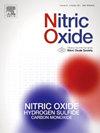Appearances can be deceiving: differences in FeNO values among COPD and severe asthmatic patients stratified according to peripheral eosinophilic count
IF 3.2
2区 生物学
Q2 BIOCHEMISTRY & MOLECULAR BIOLOGY
引用次数: 0
Abstract
Eosinophilic COPD (eCOPD) and eosinophilic severe asthma (eSA) appear to share relevant clinical features, including responsiveness to steroids and higher exacerbation rates. However, data on the expression of T2-high inflammation biomarkers and, in particular comparison of fractional exhaled nitric oxide (FeNO) levels between the two diseases is lacking. The aim of the current retrospective observational study was to investigate whether FeNO values might differ between eCOPD and eSA patients.
Sixty patients with SA and 40 with COPD were enrolled. They were divided in four groups: eosinophilic COPD (eCOPD) and eosinophilic severe asthma (eSA), if the blood eosinophil count (BEC) was ≥300 cells/μL; non-eosinophilic COPD (neCOPD) and non-eosinophilic severe asthma (neSA) if the BEC was <100 cells/μL. FeNO values, lung function and demographic data were compared between the groups.
Overall, COPD patients were older, with a higher prevalence of males and had more impaired lung function than asthmatic patients. When comparing FeNO levels among the four groups, a significant difference was found between eCOPD and eSA patients (p = 0.001), as well as eCOPD and neCOPD patients (p = 0.021). Finally, neCOPD patients showed significantly lower FeNO values in comparison with neSA patients (p = 0.005). Such results were confirmed after adjusting for age, sex, and smoking history.
Our preliminary results hint at the possibility that, despite an apparently similar eosinophilic phenotype, eCOPD patients might present with different FeNO values in comparison with eSA patients, possibly reflecting different underlying disease mechanisms.
外表可能具有欺骗性:慢性阻塞性肺病和严重哮喘患者FeNO值的差异是根据外周血嗜酸性粒细胞计数分层的
嗜酸性慢性阻塞性肺病(eCOPD)和嗜酸性重度哮喘(eSA)似乎具有相关的临床特征,包括对类固醇的反应性和更高的加重率。然而,缺乏t2 -高炎症生物标志物的表达数据,特别是两种疾病之间的分数呼出一氧化氮(FeNO)水平的比较。本回顾性观察性研究的目的是调查eCOPD和eSA患者的FeNO值是否存在差异。60名SA患者和40名COPD患者入组。按血嗜酸性粒细胞计数(BEC)≥300个细胞/μL分为嗜酸性COPD (eCOPD)组和嗜酸性重度哮喘(eSA)组;当BEC为100个细胞/μL时,非嗜酸性COPD (neCOPD)和非嗜酸性重度哮喘(neSA)。比较两组间FeNO值、肺功能及人口学数据。总体而言,COPD患者年龄较大,男性患病率较高,肺功能受损程度高于哮喘患者。比较四组患者的FeNO水平,eCOPD与eSA患者、eCOPD与neCOPD患者之间存在显著差异(p = 0.001), eCOPD与neCOPD患者之间存在显著差异(p = 0.021)。最后,与neSA患者相比,neCOPD患者的FeNO值显著降低(p = 0.005)。在调整了年龄、性别和吸烟史后,这些结果得到了证实。我们的初步结果提示,尽管eCOPD患者具有明显相似的嗜酸性表型,但与eSA患者相比,eCOPD患者可能具有不同的FeNO值,这可能反映了不同的潜在疾病机制。
本文章由计算机程序翻译,如有差异,请以英文原文为准。
求助全文
约1分钟内获得全文
求助全文
来源期刊

Nitric oxide : biology and chemistry
生物-生化与分子生物学
CiteScore
7.50
自引率
7.70%
发文量
74
审稿时长
52 days
期刊介绍:
Nitric Oxide includes original research, methodology papers and reviews relating to nitric oxide and other gasotransmitters such as hydrogen sulfide and carbon monoxide. Special emphasis is placed on the biological chemistry, physiology, pharmacology, enzymology and pathological significance of these molecules in human health and disease. The journal also accepts manuscripts relating to plant and microbial studies involving these molecules.
 求助内容:
求助内容: 应助结果提醒方式:
应助结果提醒方式:


